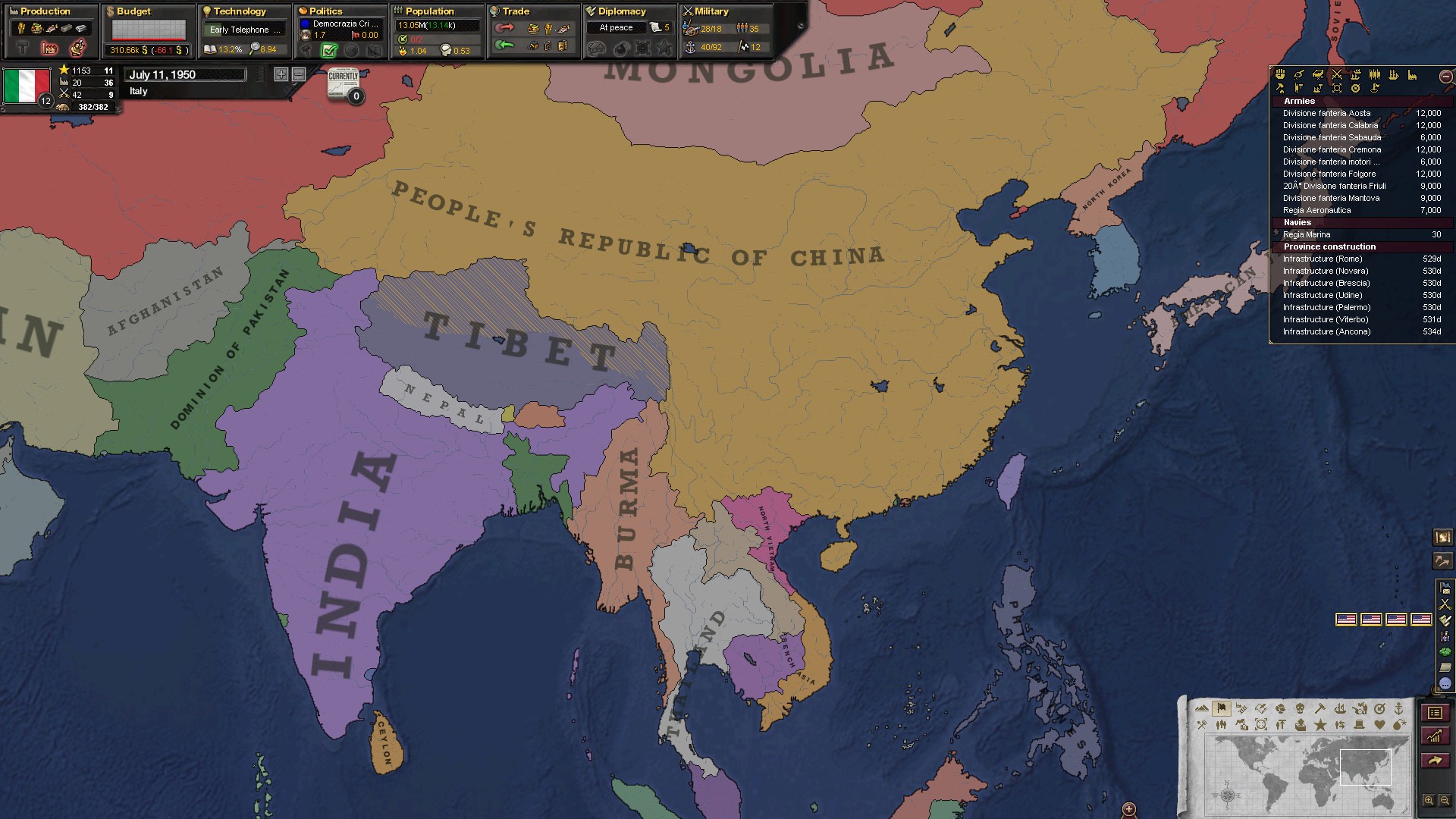

The struggle for influence that the Great Powers wage around the world is not a simple bilateral basis but occurs with each other inside different countries, giving an added dimension to diplomacy which was not present in the original Victoria. Great Powers do not just influence how a country sees them they have the added ability to use their influence on other countries to change their perception of other Great Powers. In the game controlling a Great Power, one of the eight countries with highest total score, gives special diplomatic options not available to other countries. Failure to achieve a war goal will increase the population's militancy, which can lead to revolts as well as a loss of prestige. More war goals can be added as the war progresses, although this depends on the population's temperament. War goals from Heir to the Throne, an expansion for Europa Universalis III have been integrated though they function in a slightly different way. However, Paradox Interactive has expanded parts of this system. Diplomatic and in-game actions shift this relationship around and it factors into the AI's decisions. Each country has a relation value of −200 to +200 which represents how much they like each other. The diplomacy in Victoria II is similar to that of other Paradox titles. Victoria II contains a deep political simulation reflected in 8 different types of governments, 7 ideologies and a new sphere of influence system, gunboat diplomacy, and a new election system with coalition governments and legislatures. The game also has a cottage production system simulating pre-industrial economies. All resources can be collected or produced by industry. The production and unemployment system from the original Victoria has been revised to better reflect market forces, whereas in the original, the state provided the funds for resources and the player possessed a wide range of options with which to build their economy, provided they had access to the proper raw materials. Other materials, like iron, are consumed primarily by industry, but are still tradeable. Some resources, such as wheat, are demanded principally by the population. Every province in the game produces a resource in resource gathering operations (RGOs). The economic system in Victoria II attempts to simulate the flow of resources in a world market. Additionally, the functioning of ideology in the game was tweaked such that population groups are more sensitive to changes in their country's situation, as well as inclined to agitate for specific levels of political and social reforms. Education and literacy's importance is reflected in the vast technology system that contains thousands of inventions. The education system has received an overhaul by having clergy educate people of the same religion, and each population group now has their own literacy levels. Automation of various tasks has been added, including trade and population promotion. The interface was streamlined when compared to the original game, which was described by producer Johan Andersson as, "the interface God forgot". Victoria II contains a number of changes and improvements from its predecessor. These events and decisions can lead to the creation or disintegration of nation states. There are thousands of historical events and decisions as well. As in other Paradox titles such as Europa Universalis, historical missions called "decisions", which are micro-objectives in the larger game, have been added. There are several different population groups (or "pops"), such as aristocrats, army officers, clergy, soldiers, labourers, slaves, bureaucrats and others. Nations' populations are divided into cultures, religions, classes and occupations. While warfare is a component of the game it is not the primary focus as in other Paradox Interactive games such as the Hearts of Iron series.

The game gives a lot of importance to the economy of a country by having a complex market system with over 50 types of goods and factories. Like its predecessor, Victoria II focuses on internal management, covering the industrialization and social/political changes in a country with 8 different government types. Victoria II spans the globe from 1836 with over 200 playable nations. A preview image of Victoria II showing the political map mode, interfaces, and Northern Italy in 1836.


 0 kommentar(er)
0 kommentar(er)
